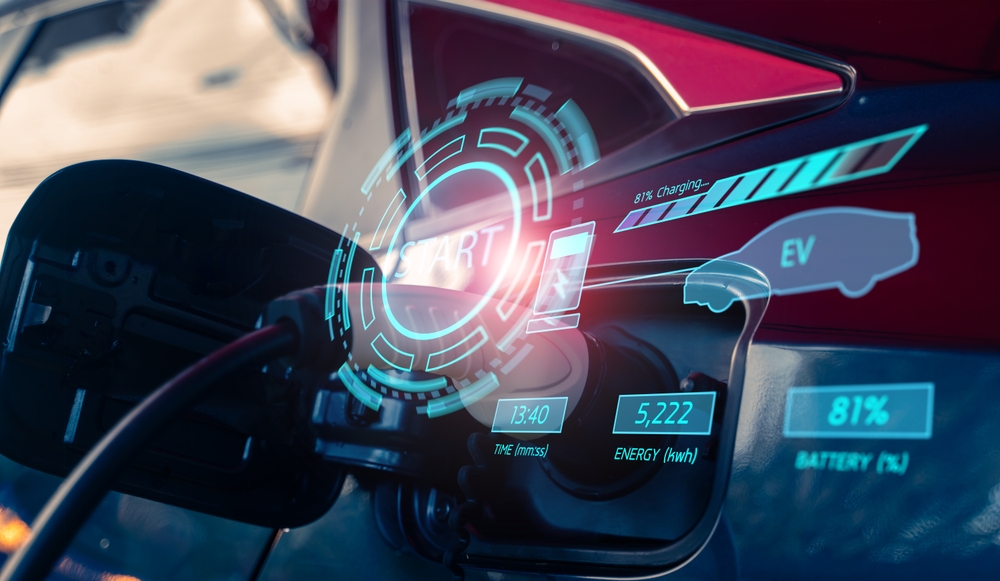Elie Gabel explains how making EVs lighter through smarter materials and AI-powered design increases range and efficiency without the need for larger batteries.
Every kilogram saved from an electric vehicle (EV) translates directly into increased range. This simple physical advantage is driving a new wave of design innovation.
Rather than relying solely on larger or denser batteries, EV engineers are now pursuing efficiency through smarter material choices and rethinking construction. Automakers are redesigning the chassis geometry, which reduces the need for redundant reinforcement.
This integration reduces mass, simplifies assembly, lowers costs, and improves overall vehicle performance. As energy efficiency becomes a defining criterion for next-generation mobility, reducing the weight of EVs has emerged as one of the most effective strategies to further increase range and sustainability without increasing complexity.
Effect of weight on energy expenditure
Lighter cars are easier to move around and are more responsive in almost every way. With less mass to propel or decelerate, acceleration is faster, braking is more efficient, and components are cooler under load. These benefits are realized through detailed simulations of drag, inertia, and rolling resistance, allowing you to understand how every gram impacts performance.
In fact, depending on design and drive cycle, a 10% reduction in vehicle weight can lead to a 6% to 8% improvement in fuel economy and range. Engineers see weight reduction as a powerful synergy, improving handling and thermal stability without the need for larger batteries or more complex systems.
Reinventing materials for mobility
The race to reduce the weight of EVs has become a scientific showdown between various materials. Each brings its own tradeoffs.
For example, aluminum-lithium alloys offer excellent weight savings, carbon fiber offers unparalleled stiffness, and high-strength steel remains the most cost-effective choice for high-volume production.
What’s interesting is how these materials are now able to work together. New adhesive and laser bonding technologies are allowing engineers to combine metals and composite materials that were previously impossible to fuse together.
Tesla’s monolithic aluminum gigacasting represents this shift, replacing dozens of welded parts with one solid structure, reducing mass and manufacturing complexity.
Beyond metals, recyclable thermoplastics and graphene-enhanced polymers are emerging as sustainable alternatives to deliver strength and durability without burdening the environment.
Smarter construction and design tools
Engineers are now leveraging artificial intelligence (AI)-based generative design tools to “grow” vehicle components that meet precise strength requirements while using the least amount of material possible.
Instead of manually drafting parts, you can input data about load paths, safety factors, and material constraints into the algorithm, allowing the software to evolve a shape optimized for performance and weight.
Digital twins bring these concepts to life virtually, simulating impact shock, vibration, and heat transfer before the metal is formed. These models use predictive analytics to discover hidden problems long before production begins.
These issues include potential safety vulnerabilities, structural fatigue zones, or deficiencies in the control system’s user interface.
Additive manufacturing complements this approach, producing components with complex lattice structures that are lighter and more rigid than stamped metal parts.
Using 3D printed carbon fiber, engineers can achieve significant weight savings while reducing material waste and production costs, setting a new benchmark for efficient EV design.
Dual role of battery
Battery packs currently serve as the heart and backbone of modern EVs, acting as energy storage systems and structural components.
This integration exposes the vehicle to various stressors such as vibration, heat, and mechanical strain. These stressors vary depending on whether the vehicle is manufactured for consumer, commercial, or industrial use.
The carbon fiber battery shell increases protection while reducing overall mass, marking a step towards safer and lighter EV platforms.
At the same time, composite enclosures have evolved to include integrally molded cooling channels and impact protection layers, increasing durability.
However, combining energy storage and structures creates challenges in terms of safety and repairability, as engineers must design systems that are easy to maintain and remain resilient under extreme conditions.
Scaling lightweight manufacturing
Materials that work beautifully in the lab often face more rigorous testing on the factory floor, where cost, scalability, and consistency determine real-world feasibility.
For example, carbon fiber remains one of the strongest and lightest materials available. Still, its high cost and slow production cycle still limit its widespread use in mass-market EVs.
To fill this gap, automakers are turning to new “hot-stamped” steels that approach the strength-to-weight ratio of carbon fiber at a fraction of the cost.
Meanwhile, closed-loop recycling programs are gaining traction, allowing manufacturers to recover and reuse aluminum and carbon fiber without compromising quality.
Materials innovation depends on finding the sweet spot between manufacturability, cost efficiency, and lifecycle sustainability, ensuring that every advancement makes sense on the assembly line.
What’s next for lightweight EVs?
Recent advances in EV engineering highlight Hyundai’s use of ultra-high-strength steel frames designed to enhance safety, stiffness, and stability while maintaining a low center of gravity for smoother, more controlled handling.
This structural approach reflects an increasing shift towards holistic vehicle design, where structure and performance are developed in tandem rather than as separate priorities.
The next stage of innovation is likely to combine EV weight reduction with solid-state battery technology, which will enable increased energy density, improved crash protection, and increased structural rigidity.
As these technologies mature, future EVs will no longer be assembled as a patchwork of components shaved to reduce weight. They can be thought of as fully integrated systems, where every material choice and design element contributes to range and driving dynamics.
The art of doing more with less
Reducing the weight of EVs goes beyond simply removing metal. This is an idea rooted in smarter, integrated design thinking.
Every gram saved is the result of a close collaboration between materials scientists, AI-driven engineers, and advanced manufacturing experts. They are redefining how EVs are manufactured, proving that efficiency is designed, not added.
Source link

